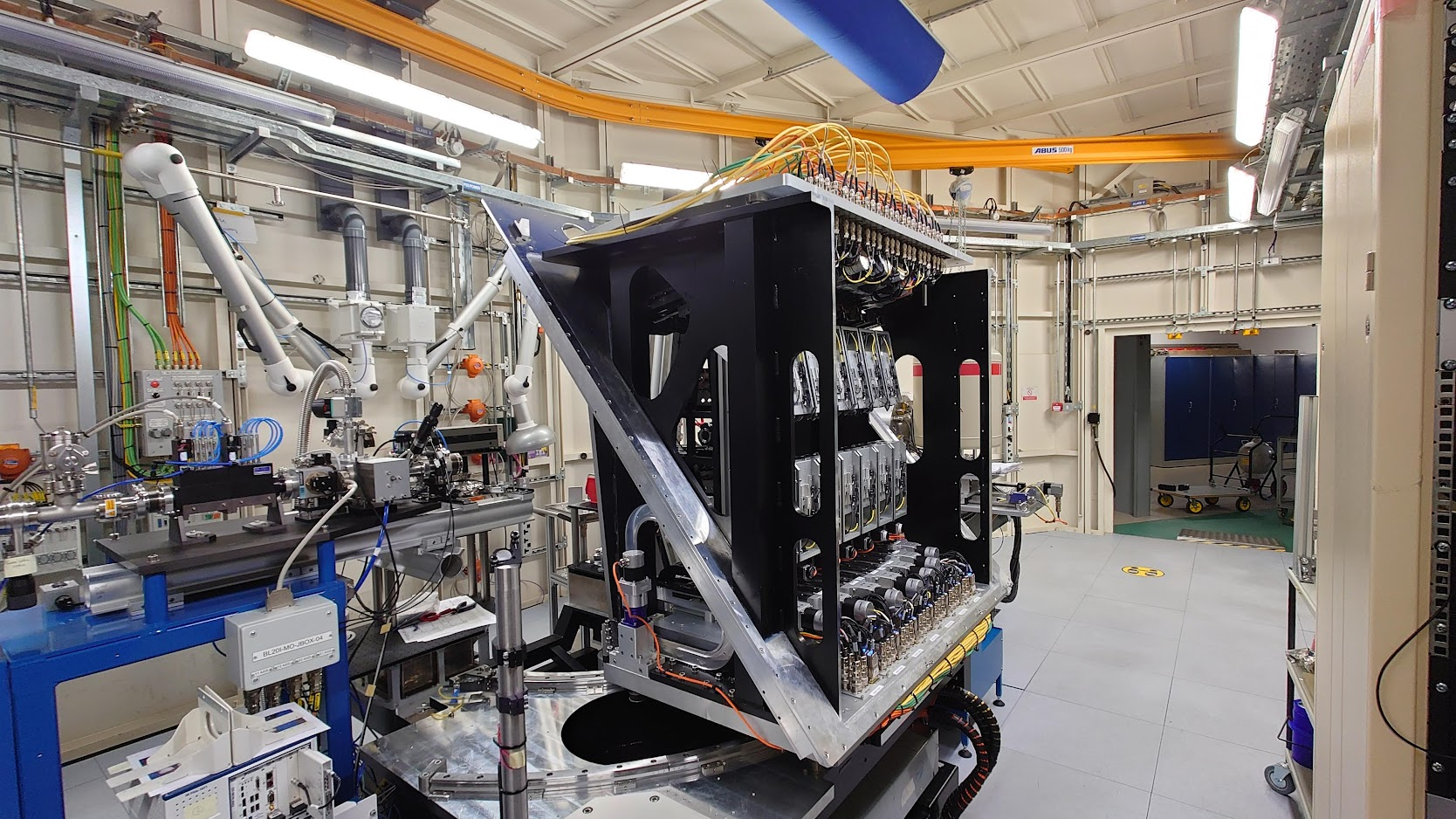26 November 2014
I20-1 is now I20-scanning
I20-2 is now I20-EDE
Please reference the beamline and the branchlines with these new names in your publications.

The new fourteen analyser spectrometer is now in regular use. It can be used with 14 crystals of the same type or two sets of seven depending on the experimental requirements, however because of the time it takes to change and align crystals, the analyser crystals cannot be changed during a visit. Often an extra day will be scheduled to set up the analyser.before your visit, which is shown as scheduled beamtime but used by the beamline team to prepare the analyser for your experiment and so you are not expected to attend on this day.
The determination of the local structure around a photoabsorbing atomic site present at low concentration and/or in X-ray unfavourable heavy matrix is one of the particular strengths of I20-scanning when operating in the conventional scanning XAS mode. The high flux and high spectral purity are the key design parameters of this beamline. The beamline is equipped with an in-house designed four-bounce monochromator which consists of two pairs of counter-rotating crystals.The main advantages are: a) high stability and reproducibility, b) fixed exit by geometry, and c) angle and energy resolution of transmitted photons are not determined by the incident beam divergence.
| Energy range |
Si(111): 4.5 - 20 keV Si (311)+: 7 - 34 keV
|
| Energy resolution |
Si(111): ΔE/E=1.3x10-4 Si (311)+: ΔE/E=2.8x10-5 |
| Flux at 10 keV (ph/s) | > 1012 |
| Beam size at sample (µm) |
HxV = 400 x 300 |
+not available at current time
Status Update April 2023
After delays caused by the pandemic and then the priority changing to install the new XES Spectrometer, the new 4 bounce monochromator project has kicked off. It is hoped a new monochromator that will reach ca 30 keV will be installed on the beamline in late 20234 or early 2025.
Status Update March 2019
The previous incarnation of the four bounce monchromator has been in regular user use for the last two years. The Si(III) set of crystals work well with some minor issues. The monochromator takes some time to thermally equilabrate when changing edge thus the beamline was normally only used for one edge per experimental user session apart from adjacent edges. The monochromator is very vibration sensitive and hence the area around the I20 optics hutch is barriered off to prevent external stimuli to activate these modes.
A new first axis is being installed, after extensive testing, in March 2019 with an enlarged second crystal ,. This should reach thermal equilibrium much faster and so make edge changing faster if not routine. It will not be a user -enabled process like B18, but it may be possible to look at more than one edge in an experimental visit. The new axis will be commissioned in April 2019, so more will be known then.
The new axis does not have room for a 311 crystal set and thus routine high energy use will not be available for some time. It is possible that the Si(333) will provide high energy X-rays but this remained to be proven. Hence the beamline energy range is likely to stay at 5-20 keV until a new monochromator is installed.
The 64 element has had Xspress4 electronics fitted this year which has improved its performance radically making it simpler to collect data on samples with high scattter or other elements in high concentrations.
Wednesdays
After a machine day the I20-scannign optics take several hours to warm up and stabilise, thus it is not usually possible to start measurements until after lunch.
Diamond Light Source is the UK's national synchrotron science facility, located at the Harwell Science and Innovation Campus in Oxfordshire.
Copyright © 2022 Diamond Light Source
Diamond Light Source Ltd
Diamond House
Harwell Science & Innovation Campus
Didcot
Oxfordshire
OX11 0DE
Diamond Light Source® and the Diamond logo are registered trademarks of Diamond Light Source Ltd
Registered in England and Wales at Diamond House, Harwell Science and Innovation Campus, Didcot, Oxfordshire, OX11 0DE, United Kingdom. Company number: 4375679. VAT number: 287 461 957. Economic Operators Registration and Identification (EORI) number: GB287461957003.